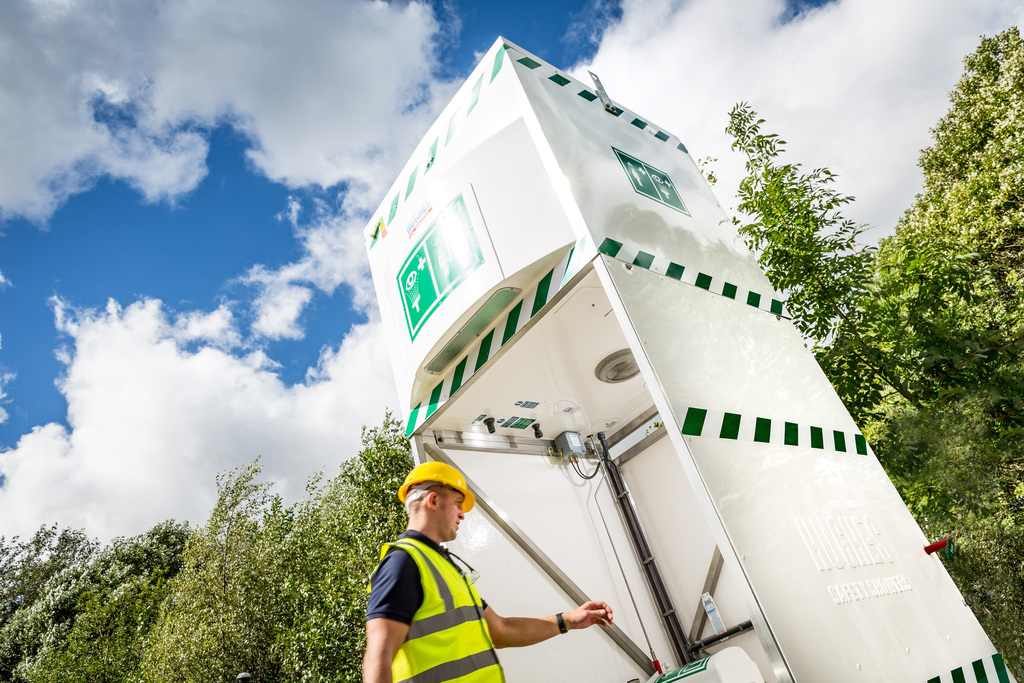

|
Edward Lowton
Editor |


|
| Home> | Health, Safety & Welfare | >Safety Management | >Combatting bacteria growth in emergency tank showers |
Combatting bacteria growth in emergency tank showers
04 December 2018
In some environments providing emergency safety showers and eye wash stations can be challenging, for instance a consistent supply of potable water cannot be guaranteed, or a tepid temperature can be difficult to maintain due to extreme ambient temperatures. Emergency tank showers offer a solution, but care is needed, as Hughes Safety Showers explains.

Emergency tank showers can go unused for a long time, so the water held in the tanks may become stagnant and susceptible to bacterial growth. If not properly treated and maintained, it can become a source of infection.
The tepid water temperature range required by EU and International standards (ANSI Z358.1 and EN15154) is another contributing factor. These standards stipulate that the water temperature in emergency safety showers must be between 16 and 38°C. Unfortunately, bacteria thrive in temperatures between 20 and 45°C.
OSHA identified certain bacteria as a potential source of infection in safety showers. These include:
- Acanthamoeba, which may cause eye infections
- Pseudomonas, which may cause eye, skin, muscle, lung and other tissue infections
- Legionella, which may cause serious lung infections
Not everyone is vulnerable to these bacteria, but for those that are the resulting infections can be quite severe.
ANSI requires that safety showers and eyewash stations are tested at least once a week. This weekly activation process displaces stagnant water in the pipework and flushes out corrosion or sediment, reducing the risk of bacteria growth. The duration of the flushing depends on the volume of water within the unit but it is recommended to follow a real-life emergency scenario to ensure that the equipment is able to run for the required time.
The UK Health and Safety Executive developed a guide to help with controlling the risks of exposure to Legionella bacteria. It recommends developing a risk assessment profile for all man-made water systems, including safety showers and eye/face wash equipment. A routine inspection cycle should include sterilising strainers, shower heads and nozzles.
Hughes Safety Showers treats all the emergency tank showers with a self-sanitising treatment (SST) on the tank walls prior to leaving the manufacturing facility. The SST inhibits the growth of bacteria, keeping shower users safe from infection. Annual re-treatment is recommended and is part of all annual services provided by Hughes.
An additional operational treatment for sanitising emergency tank shower water is the use of Hydroclenz. This product provides constant protection against infestations of pathogenic bacteria. The ceramic component serves as an oxidising agent, while the noble metal acts as an ionising agent, working together to kill the bacteria. They also help inhibit corrosion and scale build-up. https://www.hughes-safety.com/hub/bacteriagrowth/
- Hughes hits 45
- Managing the risk of Legionella in emergency safety showers
- Emergency safety showers
- Protecting people in the printing industry
- GRP ladder platform for tank showers
- Portable decontamination misting shower launches
- ISO 9001:2015 achieved
- Emergency safety showers for hire
- Sharing secrets of business success
- GRP ladder platform for tank showers

















